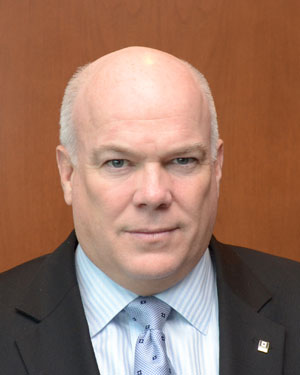 Bill Duggan
Bill Duggan
Times they are a changing in the reefer business
There has been a “paradigm shift” in the reefer business according to Maersk’s Bill Duggan. And there’s a lot more change to come in the market, just ask Apple, which ships IPhone 5s in reefer boxes.
By George Lauriat, AJOTBill Duggan, Maersk vice president of refrigerated services North America, has been in liner shipping for over thirty years and has seen a few changes. But as he explained in an AJOT interview, the current global reefer business is vastly different than the one of just a decade ago and is on the cusp and even a more dramatic shift.
 Bill Duggan
Bill Duggan
 Bill Duggan
Bill Duggan





